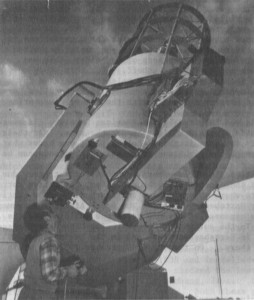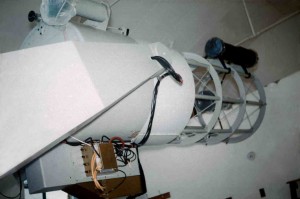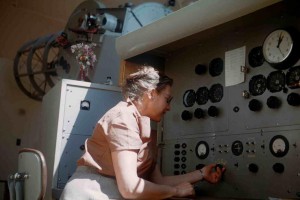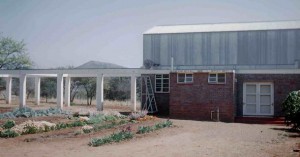Flux (light) Collector (later called The Dutch Telescope)
|
 |
Index:
Summary; History; Current; Technical; Sources; Links; Gallery:
In brief
Important Contributions:
The Flux Collector was used to observe and analyze a wide range of stellar surface qualities in the Milky Way and Magellanic clouds. The considerable database of photometry of thousands of stars was valuable input to the Hipparcos satellite programme of the European Space Agency (ESA), and it is still used in combination with the GAIA satellite data. (Pel, 2023)
Description:
The telescope was the first fully automated telescope in South Africa. It combined three unique innovations.
• Fast and accurate electronic preset pointing (“go to” pointing) with a slewing speed of 90o per minute and an accuracy of 15 arcseconds.
• High resolution over a small field of view (hence the name “light collector”). This uses a 91cm primary aperture with an a-spherical primary mirror and a spherical secondary, manufactured by Pearson at Yerkes Observatory, USA.
• Directly integrated 5-colour spectrophotometer with ultra-stable filter passbands in the visual and near ultraviolet part of the spectrum.
The motor assembly, control panel, and electronics were made at Leiden University. The spectrometer was developed by Theodor Walraven and UV-transmitting materials were manufactured mostly by Johanna Walraven. (Pel 2023)
Historical Background
Owners:
Leiden Observatory.
Where Located:
- Leiden Southern Station, Hartebeespoort: 1957 – 1978.
- European Southern Observatory (ESO) at La Silla, Chile: 1979 – 1997
Current Information
Present Location:
Owner: Leiden University Observatory.
Status: Decommissioned.
Condition:
Technical Details
Type: Dall-Kirkham Cassegrain Reflector
Aperture: 36 inch (91.4 cm)
Focal Length:
Mirror:
Mounting:
Attachments: Fitted with a simultaneous operating five colour spectrometer.
Manufacturer:
• Mirrors and optics: Pearson of Yerkes Observatory, USA.
• Mechanical structure: Rademakers, Rotterdam, Netherlands.
• Motor assembly and control: Leiden University, Netherlands.
Operational History:
Building:
1957-1978: Leiden University Observatory Southern Station, Hartbeespoort
1979-1997: Joint operation Leiden University Observatory and ESO La Silla, Chile.
Sources
Documentation:
Pictorial Sources:
- Pel, J.W. Pers. comm. 2023.
- Moore, P. & Collins, P., Astronomy in Southern Africa, p.110.
Bibliography:
- Moore, P. & Collins, P., Astronomy in Southern Africa, pp.108 – 109. (General)
- Pel, J.W., “The ‘Lightcollector’ telescope of the Leiden Southern Station and Walraven’s Spectrophotometer. Unpublished, 2023.
Acknowledgement:
Many thanks to Jane and Vincent Carruthers who helped to research and write this page.
Gallery

The 36 inch Flux-collector telescopewith Patrick Moore at Leiden Southern Station, Hartebeespoort.
Photo Credit: Pete Collins. Source: Moore

Prof Theo Walraven with the Flux Light Collector.
Source: MNASSA

Close up of the Telescope.
Source: A.S.S.A. Archives: Peter Smits Collection

Mrs Walraven at the controls console of the 0.9m Flux-Collector.
Source: A.S.S.A. Archives: Peter Smits Collection

Flux Collector Building.
Source: A.S.S.A. Archives: Peter Smits Collection
